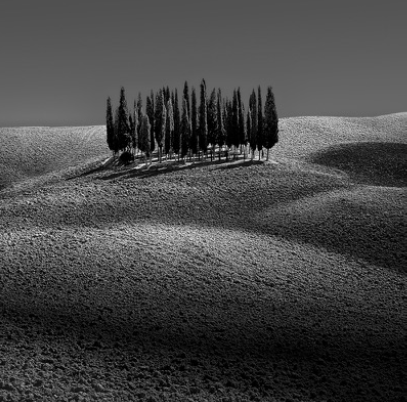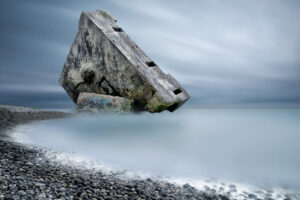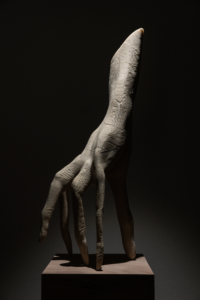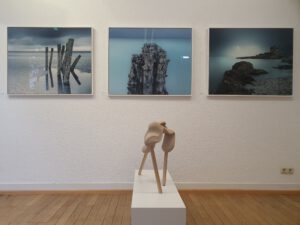
Erste Eröffnungsrede
von Wolfgang Birk (Leiter, Kunstverein Dillingen)
Liebe Kunstfreunde,
es ist mir eine große Freude, heute zur Eröffnung der Ausstellung von Werner Richner und Pit Molling in der Galerie Pusić reden zu dürfen. Mein Part betrifft die Kunst von Werner Richner. Wir dürfen heute Werke eines Fotografen betrachten, der uns mit seiner Kamera auf eine Reise zu den Schönheiten unserer Welt mitnimmt – sowohl zu den natürlichen als auch zu den von Menschen geschaffenen Wundern.
Werner Richners Fotografien zeichnen sich durch eine besondere Verbindung von Licht, Farbe und Form aus. In seinen Bildern hält er magische Momente fest, die uns zum Staunen bringen. Besonders in Zeiten, in denen unsere Umwelt immer mehr unter Druck gerät, ist es ein wertvoller Beitrag, wenn ein Künstler wie Richner uns die Schönheit der Natur vor Augen führt und sie uns bewusst macht.
Wie Johann Wolfgang von Goethe sagte:
„Schönheit ist überall ein gar willkommener Gast.“
Dieses Zitat könnte das Schaffen von Werner Richner kaum besser beschreiben. Denn seine Fotografie ist weit mehr als bloße Dokumentation. Sie zeigt uns nicht nur, was wir sehen können, sondern lässt uns spüren, was hinter den Motiven liegt – eine tiefe Wertschätzung für das Schöne in der Welt.
Zu den neuen Arbeiten zählt die Serie „Reflecting Rocks“, die Richner 2023 begann. Hier spiegelt er Felsformationen in spektakulären Farben und Formen auf der glatten Oberfläche eines Meeres im Dämmerlicht. Diese Spiegelungen lassen die Grenzen zwischen Realität und Illusion verschwimmen. Das Zusammenspiel von Licht und Natur bringt die Betrachter dazu, über die Vergänglichkeit und Beständigkeit der Natur nachzudenken.
Dabei ist die Schönheit kein bloßer Selbstzweck. Es ist die antike philosophische Verbindung zwischen „Wahr“, „Schön“ und „Gut“, die für Richner wichtig ist. Die gesprengten Bunker an der Küste der Normandie mit ihrer Lichtführung aus dem Westen sind auf ihre ästhetische Weise engagierte Mahnmale gegen den Krieg.
In der Serie „Street Life“ wendet sich Richner der Architektur zu und zeigt, wie Menschen die strenge Geometrie moderner Bauwerke mit Bewegung füllen. Auch hier führt uns der Künstler vor Augen, dass selbst im Alltag, in den uns vertrauten Städten und Orten, eine Schönheit verborgen liegt, die nur darauf wartet, entdeckt zu werden.
Richner selbst sagt, er sei „immer auf der Suche nach dem Besonderen, dem Ungewöhnlichen“. In dieser Suche kehrt er oft zu Orten zurück, die er bereits fotografiert hat, und entdeckt stets Neues. Diese Ausdauer, diese Geduld, den perfekten Moment einzufangen, spiegelt sich in all seinen Bildern wider. Eine seiner größten Stärken ist es, die ästhetische Besonderheit jedes Motivs herauszustellen. Es ist seine bewusste Auseinandersetzung mit Licht, Farben und Komposition, die uns die Welt durch seine Augen sehen lässt – eine Welt, die trotz ihrer alltäglichen Vertrautheit immer wieder neu und überraschend wirkt.
Neben Natur- und Landschaftsaufnahmen begeistert Richner auch durch seine Architekturfotografien. Seien es die monumentalen Bauten Santiago Calatravas in Lyon oder die Vierungskuppeln großer Kirchen, die durch ihre ornamentalen Muster und das Spiel mit Licht eine fast überirdische Schönheit ausstrahlen – seine Fotografien laden uns ein, die Welt aus neuen Perspektiven zu betrachten.
„Intensität beginnt dann, wenn die Zeit unwichtig wird.“, schreibt Richner. In dieser Aussage liegt das Herz seiner Arbeit. Seine Bilder fangen flüchtige Augenblicke ein, die sich unserer Wahrnehmung entziehen würden, wäre da nicht die Linse seiner Kamera, die uns die Ewigkeit in einem Moment offenbart.
Zum Abschluss möchte ich noch einmal betonen, wie beeindruckend es ist, dass Werner Richner es schafft, mit seinen Bildern sowohl die natürliche als auch die von Menschen geschaffene Schönheit zu würdigen. Seine Werke lassen uns innehalten und nachdenken – über die Welt, über die Kunst und darüber, wie beides miteinander verbunden ist.
++++++++++


Second opening talk
by Johannes Birringer
Decay of the aura? Shifted topoi? Or magical moments?
Preface
The reference to Walter Benjamin's term "aura" is to his famous 1935 essay in which he examines the aesthetic, social and historical processes that accompany the technical reproducibility of works of art. The perception of images is constantly changing, because the representation of realities is subject to reproduction possibilities and processes (and Benjamin was alluding to means such as printmaking, photography or tape recording).
Our exhibition indeed focusses on precisely such known reproductive media (photography) as well as on new technique of 3D-printing.
1.
Magical moments in photography are the moments, one imagines, in which the photographer, perhaps after some effort and exertion, but also guided by experience and artistic intuition, has found the right angle and the exact light he wants for the camera's view. The photographer presses the shutter button.
The camera then looks at the landscape or the building, the sand and the rock, the bunker, the trees, the water or the sky, at something natural or human, something built and constructed, and the other person is captured, perhaps even torn from his movement, dragged onto the stage of visuality to be what is being portrayed. The moment is frozen in time. [it returns the gaze - the It is the unique appearance of a distance, however close it may be"]Es – das Gegenüber – erwidert den Blick; das Es ist die „einmalige Erscheinung einer Ferne, so nah sie sein magThat is how Benjamin defines "aura" as appearance [Erscheinung], whether as a natural phenomenon or as an artwork.]
Just as an actor or dancer may suddenly find themselves on the stage, in open space, sacrificed in all existing dimensions. [And Benjamin writes about early artworks as cult objects, they have a religious dimension.] The image captures the movement. The actor is now also frozen, lifeless like a doll.
+++
Paul Virillios Bunker Archaeology Paul Virillio Bunker Archaeology is an archaeology of the future, his photographs exhibited for the first time in 1975: the Centre Pompidou in its formative phase showed Virilio's bunker archaeology in parallel with the publication of his groundbreaking book, in which all the motifs of his philosophical thought are already laid out: military space and communication war, deception and acceleration...the history of borders, the infinite expansion of the ocean, and of the air space.
Paul Virilio predicted late modernity based on the buildings that the Third Reich erected on the European beaches from the French-Spanish border to Norway. In Bunker Archaeology he describes the drastic cultural change after the Second World War, which he sees as the "dematerialization" of the classical war apparatus. Virilio writes: "These concrete blocks were in fact the last remnants of the history of borders", from the Roman Limes to the Great Wall of China; the bunkers, as the ultimate military surface architecture, had been shipwrecked on national borders..... at the very moment when the sky entered the war. … From then on there was no longer any protective space or distance, every territory was completely accessible, everything was immediately exposed to view and destruction.
2.
 .
.
Pit Molling, „Reductionism II“, Mixed-Media / 3D Print (Polylactic acid, wood), 2023, und Fotografien Werner Richners im Hintergrund [links] Foto: E. Puzić // Pit Molling, „Half-Truth,“ Polylactic acid/3D Print (Polylactic acid), 2022 [rechts]
Magical moments of not understanding [or “Dare to be more Stockhausen”]
Pit Molling is our second guest in this exhibition, and with him we are welcoming a Luxembourg artist here for the first time in the Puzić Gallery.
However, with Molling we can also welcome a turning point in sculpture, plastic art, and now the question of the aura and the technical reproducibility of art in the age of new technologies may be posed differently again. Pit Molling does not work with the familiar materials such as stone, wood, marble, bronze, iron, or even wool and textiles (as Katharina Krenkel showed us at the beginning of the year). Rather, he completed his so-called “analog” training period (plastic art and mixed media) in 2012, after studying at the Free Academy of Fine Arts in Essen. He then began to work with drawing in digital space – and to print out these drawing constructs and objects, which he created on the computer using software (Computer-Aided Design /CAD), using the 3D printer.
In digital terms, Molling works with programs. Not like Richner, who travels with a camera in Italy, Andalusia or Normandy, but in his home laboratory in Weiler-la-Tour, on the computer - and then with fusion techniques and adhesives when the building blocks cut out by the 3D printer have to be put together. His sculptures are created using 3D printing with polylactic acid, with melted bio-plastic (PLA or polylactic acid, made from plants, so with "natural ingredients"). However, with larger objects the printer can only print parts, fragments. The software program for the printer is called "Slicer"... (and that makes you think of the Texas Chain Saw Massacre or fantasy and games). Texas Chain Saw Massacre oder an Fantasy und Games).
So it takes time, and then Half-Truth, Adaptive Cloud, A Borers Legacy, Manufacture III (Hand), Historical Byte, Evolving Echoes, or the just-finished “Octopus” with its writhing tentacles or flower stalks are created. oder der gerade noch soeben fertig werdende “Octopus” mit seinen sich krümmenden Tentakeln oder Blütenstengeln. Und die krümmenden Formen lassen auch eine andere, avant-gardistische Musik im Ohr erklingen, atonal, dissonant.
The process of creation in the real world is therefore a assembling, a gluing of the seams and veins - could one even perhaps call it a cutting together, as in film (editing, cutting)? The textures of the assembly of these works of art and handicrafts are often incredibly fascinating, and here I see a kind of bridging of our positions in this exhibition:
Pit Molling counteracts, in the sense of counteracting, the supposedly perhaps sublime, transcendental photography of Werner Richner, which is often also constructed with the consciously repetitive gesture of counter-shine (reflection). Richner is outside, in Normandy, on the Atlantic Wall, waiting for the one moment in which he can capture a tilted, demolished bunker on the edge of the sea with a long exposure ("Martial Sea Mark"). He photographs "The Extravaganz", a futuristic building in Valencia. His camera catches "Order and Progress," in Aviles (Asturia), a scene that looks like an imaginary moon landscape with a round cupola, and underneath a tiny boy on a bicycle, appearing like a Fata Morgana.
In many of his pictures we see rocks, solidified salt, trees and the unusual Flysch mountains, but also architectural buildings reflected in the water, between sky and earth or lake, and the reflection lends the forms found in nature something surreal or supernatural (we are here in the cosmos of Caspar David Friedrich, and perhaps the romantic with Nietzschean irony), because how can we even classify Richner, who has traveled the world and after his 80 volumes of photographs? Perhaps as a close-up portraitist (see Close Up), constructor of a purified, deserted, non-objective, transcendent world view?
Molling, equally as a provocateur-pioneer of a new sculpture (after Giacometti, after Kokoschka (who once called himself the “last painter”), as well as a successor to the Surrealists, also works abstractly and yet he sometimes takes up old/historical motifs, or let's say: instruments, like this old Wehrmacht drill there, or the screeching lathe frame under "Adaptive Cloud." If you turn it, it makes screeching noises, if you don't touch it, it is silent. And the handManufacture III) (Manufacture III) – isn't it an Egyptian sculpture, the hand of Nefertiti, an artificial phantasm? However, the Evolving Echoes Evolving Echoes (a wonderful title) also point to the process, which is very concrete and points to the future of AI: production is assembly, as at VW in Wolfsburg, individual parts are screwed together by the robot. Something new is created, many parts are supplied, and if the 3D printer makes a mistake, then perhaps, as with Yamamoto or Rei Kawakubo, quite extraordinary asymmetrical combinations of new clothes and ecospheres. [Please note that Molling often adds a wooden frame to the abstract forms, a concrete “substructure”?]
There is still much to interpret and analyse, controversially of course, because this exhibition is intended to raise questions and disturb your senses. Please talk to the artists, challenge them.
Back, finally, to Virilio's Bunker Archaeology
(perhaps a surprising turn also to Pit Molling's architectures)
The bunkers - "empty shells" - offer a material, tactile experience that testifies to a world whose physical parameters have been radically changed, expanded or even omitted. Emblems of a pre-digital era left behind by a technological takeover that we could hardly have imagined twenty years ago, the bunkers are displaced topoi, verschobene Topoi, like so much of modernist architecture that wanted to pave the way for an enlightened future that never came. In their dilapidated state, the bunkers condense the contradictions of industrial modernity, whose preferred material, concrete, could be adapted to any shape, only to then harden into a man-made fossil, an instant relic.
+ + +
References
Virilio, Paul (2011), Bunkerarchäologie, trans. Bernd Wilczek. Wien: Passagen Verlag.
Secondary Source:
Olalquiaga, Celeste (2019), „Remains of the Fray,“ Artforum, vol.57, no.6.
Photos of the artworks are courtesy of the artists and Esad Puzić